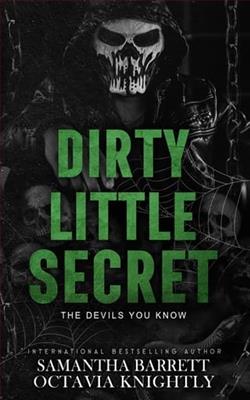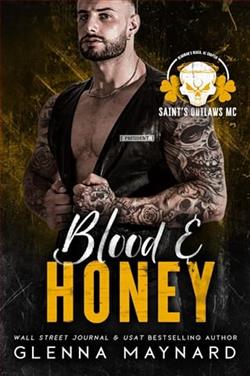Page 4 of The Perfect People
As Ryan headed to his office to check on what he’d missed overnight, Jessie stepped over to the corkboard where the team kept a list of all the victims of the killer that had been keeping her up at night, one who certainly met HSS’s criteria. The media hadn’t given him a name yet—and itwasa him—because they weren’t yet aware that the same killer was responsible for all the deaths in question. But HSS was and they were calling him the Clone Killer, at least for now.
So far, he’d killed four people, each about three weeks apart, although the timing wasn’t exact. But that wasn’t what had Jessie up at night. Each of those victims had almost been killed once before.
The HSS team didn’t realize it initially, after the stabbing death of Woody Garnett, though perhaps they should have. Garnett had almost been murdered in March by a serial killer who stabbed people she thought had wronged their romantic partners. But Jessie and Ryan had saved him at the last second, capturing the unhinged young woman, Harper Grey, who had already plunged the knife into Garnett’s abdomen in a hotel room. He recovered, only to be killed the same way a few months later on his boat docked in the marina. It was suspicious but there was no evidence, nor any credible suspects, as Grey was in prison.
Jessie started to put the pieces together immediately after learning of the murder of Janet Goodsen, who had acid sprayed on her a few weeks after Garnett’s death. Goodsen had almost died by way of acid six months previously at her tenth wedding anniversary blowout party. A disturbed event photographer had been killing others the same way and Goodsen was next on her list, until Jessie stopped her in the nick of time.
But Jessie wasn’t around when the woman was attacked again, this time in her own home, when her family was out. A small notebook, completely empty, was found lying on her chest, for reasons they had yet to determine.
The original culprit, Sloane Baker, wasn’t responsible this time around. She had fallen to her death in a violent confrontation with Jessie and Kat the night of the anniversary party. But it was clear that whoever was committing these crimes was painstakingly recreating the near-murders that a serial killer’s next intended victims almost suffered. That was borne out several weeks later in mid-July.
“Looking for some sudden breakthrough?” Karen asked as she joined Jessie at the corkboard she was staring at.
“Yeah,” Jessie admitted, “I figured that if I studied this thing five hundred and one times, something would come to me.”
She was looking at the case of Sheena Lennox, a wealthy, married Santa Monica Realtor who had, like Janet Goodsen, been killed in her own home. While her physician husband was at the hospital, an intruder had broken in and made deep incisions in her arm and leg, slicing major arteries with one of her own kitchen knives, then locked her in a pantry, where she bled out. Her husband found her when he got home. In her case, a red apple was found on the floor just outside the pantry door.
The murder was eerily reminiscent of a series of killings committed by an in-home chef named Kurt Sumner last Januarywho used precise cuts to major arteries using household knives to kill his victims. He considered it a form of art and had intended for Sheena to be his next canvas before Jessie captured him. He was currently serving multiple life sentences. Unfortunately, Sheena wasn’t so lucky this time around.
After the third murder, HSS had snapped into action, reaching out to every near-victim in cases Jessie had investigated that involved serial or spree killers. They especially focused on the last potential victim who would have been killed if Jessie hadn’t solved the case in time.
For all of those people, who numbered in the low double digits, they helped set up or improve home security systems, provided complimentary pepper spray and Tasers, taught basic self-defense techniques, and, in some cases where folks were particularly vulnerable, even put units outside their homes at night. But all of those efforts were blown up after the fourth murder.
“Has anything come to you?” Karen asked.
Jessie was so deep in thought that she’d forgotten that the other detective was still standing beside her. She looked over at the woman, who at thirty-eight was seven years her senior. Karen Bray, petite and self-effacing, was the only team member with a young child, and her maternal instinct was coming out now in the concerned tone she used as she checked in on how Jessie was doing.
“It’s just that I don’t think I’ve ever been more frustrated by a case,” she admitted. “I come in here every day and yet I don’t have a single lead to pursue. If Ryan were to get a new case today and assign it to me, I’d have to take it because I don’t have anything fresh to work with on this, even after Melissa Ferro’s murder, and that’s with the video.”
Karen nodded in shared disappointment. The one positive that was supposed to come when a serial killer took another life was the possibility of new evidence, especially when there was video footage of the killer. But other than brief snippets that showed the masked assailant entering and leaving Ferro’s home the night she died, there was nothing. Actually therewasone more thing: he waved. Both when he accessed the house and when he left, he made sure to wave dramatically for the camera.
Melissa Ferro, the most recent victim of the Clone Killer, as they dubbed him when his methods became clear, was killed almost three weeks ago, on August 12. She was found the next day, sprawled on the floor of her living room, dead of a massive dose of the sedative trazodone, which had been added to the oat milk creamer she put in her coffee each morning.
She was discovered by a friend who became concerned when she didn’t meet for lunch that day. When they investigated, they found a brand new, unsharpened pencil in her mailbox. It had been rubbed in the same poisoned oat milk that killed her.
The team had spent hours trying to discern the meaning of the items left near the bodies. Did the apple found near Sheena Lennox’s have to do with the original intended killer being a chef? Did the notepad found on Janet Goodsen’s chest have any connection to how obnoxiously obsessive she was about list-making for her tenth anniversary party? No one could glean any particular correlation between Melissa Ferro and the pencil.
Someone had posited that the items might all be connected to a shopping list: the pencil for writing items down, the notebook keeping the list, and the apple as the first purchase. Jessie even threw out the idea that there might be some kind of school association with the notebook and pencil being supplies and the apple being for a teacher. The truth was that they were all grasping at straws.
There were only two things they knew for sure: the killer was male and over six feet tall. That limited information came from the surveillance camera outside Melissa Ferro’s house. But because the camera that caught the glimpse of him was perched high above her front door at an odd angle, was black and white, and was partially blown out by an overly bright porch light, they couldn’t tell anything else.
He was masked. He wore all black. And he had on a thick coat so they couldn’t determine his weight or body frame. Only his stride style, in combination with his height, had convinced their research genius in residence, Jamil Winslow, that they were dealing with a man. But that one bit of positive news was overwhelmed by a much bigger negative.
Melissa Ferro, victim of the poisoned oat milk, had almost died once before, last January, when her husband, Richard, drugged her in their Bel-Air home, also using a massive dose of trazodone. It was a panicky decision, borne out of fear that she would discover that he’d murdered his mistress, who was pregnant with his child.
Jessie eventually determined that Richard Ferro was the killer and saved his drugged wife. Ferro, convicted for both killing his mistress and the attempted murder of both his wife and Jessie, was serving a life sentence.
But because Ferro wasn’t a serial killer, no one had thought to warn Melissa that she might be the future victim of a copycat killer. Ferro’s case had seemed straightforward: he had killed his mistress, who was going to reveal their affair and her pregnancy. Then he decided to kill his wife when he thought she might discover the truth. And finally, he tried to choke Jessie to death when he realized she’d figured out his crime.
This wasn’t a man who had conceived an elaborate plan to kill multiple people. He was just an amoral scumbag whose world spiraled out of control and whose every attempt to solve his problems ended in violence. That didn’t fit the pattern of the Clone Killer.
But if the original murderer in this fourth case—Richard Ferro—wasn’t a serial killer and his final near-victim wasn’t a planned selection on some list, then how were they supposed to protect other potential future victims? It was one thing to put squad cars outside the homes of people who had almost died at the hands of serial killers caught by Jessie Hunt. But to put cops at the homes of every near-victim of every killer Jessie brought to justice?
That wasn’t just eleven people. Depending on how one counted, that number could range from about fifty people to well into the hundreds. LAPD didn’t have anywhere near the resources for that level of personal protection. And yet, they couldn’t just leave all those folks in the dark.
“I’m going to check in with Jamil and Beth,” Jessie said to Karen as she headed toward the research department, silently making a decision that she realized she should have come to some time ago.
“Go easy on them,” Karen called after her. “You’ve got that uber-purposeful look to you. Just remember—whatever you’ve got in mind, they’ll be hearing it for the first time.”















